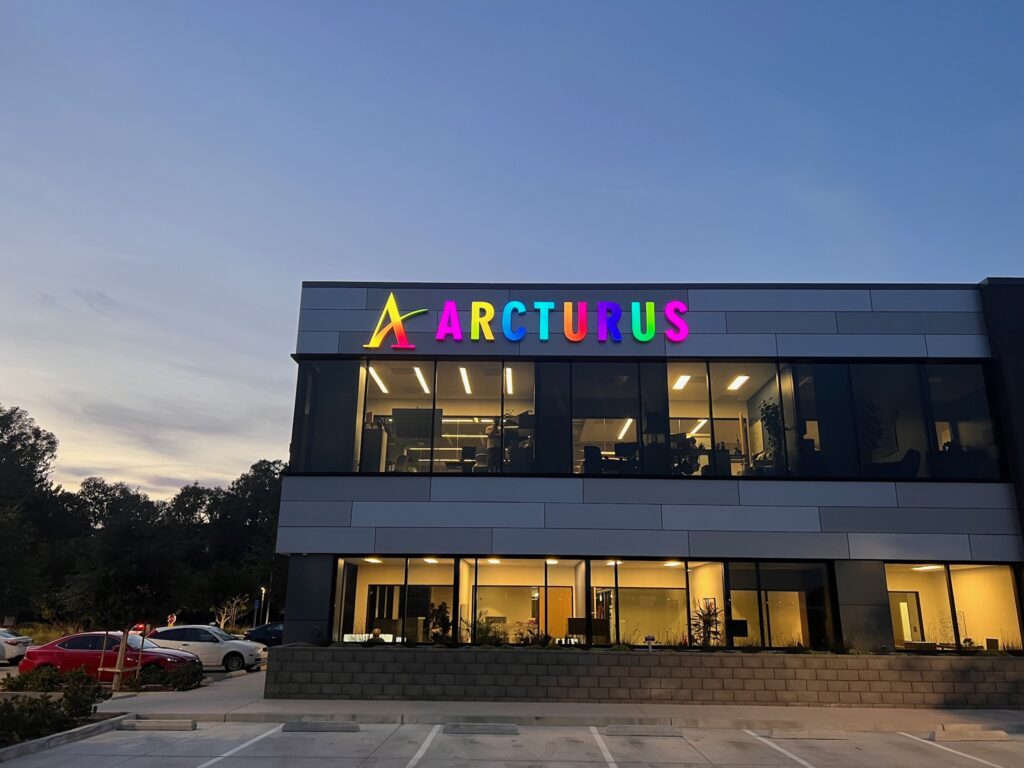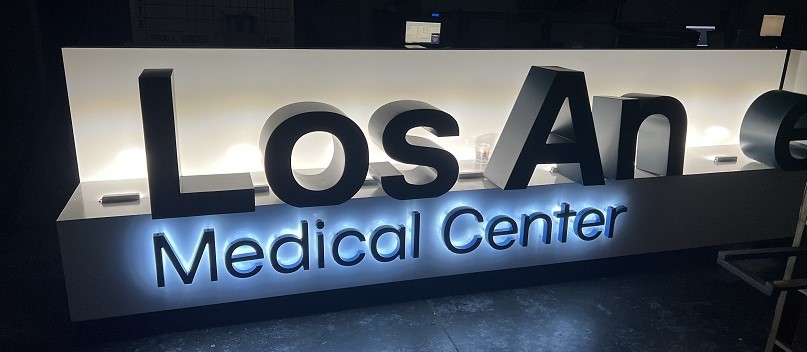In the rapidly evolving world of commercial and residential signage, the integration of innovative materials and technologies is not just a trend but a revolution. This transformative wave is led by the advancements in Light Emitting Diode (LED) technology and the introduction of new materials, setting a new standard for both the aesthetic appeal and functionality of signs. For professionals involved in the planning, design, and installation of interior and exterior signage, understanding these innovations is crucial. This article delves into the essence of these advancements, offering insights into their application, benefits, and the future they promise for the signage industry.
The LED Evolution: Brightening the Horizon
LEDs have transformed the sign industry, offering unparalleled brightness, energy efficiency, and longevity. Their versatility allows for creativity in design, making them ideal for both interior and exterior applications. Here’s why LEDs have become the go-to choice for signage:
Energy Efficiency: LEDs consume significantly less power than traditional lighting, leading to lower electricity costs.
Durability: With a lifespan often exceeding 50,000 hours, LEDs reduce the need for frequent replacements.
Brightness and Visibility: High-intensity LEDs provide exceptional visibility, even in daylight, enhancing the readability of signs.

Innovative Materials: Beyond the Conventional
The use of new materials in sign design has expanded the possibilities for architects, engineers, and designers. These materials are not just about aesthetics; they offer practical benefits that enhance the durability, installation, and maintenance of signs. Key innovations include:
Flexible LED Modules: These modules can be bent and shaped, allowing for curved and custom-shaped signs that were difficult or impossible to achieve with traditional materials.
High-Performance Plastics and Composites: Materials such as polycarbonate and acrylic offer high impact resistance and can be fabricated into various shapes, offering flexibility in design without compromising durability.
Eco-Friendly Materials: The shift towards sustainability has led to the adoption of recycled and biodegradable materials, reducing the environmental impact of sign production.
Design Considerations and Best Practices



When integrating these new technologies and materials into sign design, several considerations ensure not only the sign’s effectiveness but also its longevity and compliance with regulations:
Brightness and Contrast: Optimal lighting levels and contrast are crucial for readability, especially for wayfinding and informational signage in buildings like hospitals and office complexes.
Weather Resistance: For exterior signs, choosing materials that can withstand weather elements without fading or deteriorating is essential.
Maintenance and Accessibility: Designs should consider ease of maintenance and comply with accessibility standards, ensuring signs serve their intended purpose for all users.
Technological Innovation in Wayfinding Signage
The evolution of LED technology has introduced features like adjustable color temperatures and improved lumens per watt efficiency, enabling signs to be more energy-efficient while providing superior visibility in various lighting conditions. Websites such as the International LED Professional Symposium and Materials Research Society offer detailed insights into the composition and advancements in LED technology and materials.

Environmental Impact and ADA Compliance
Considering the environmental impact is crucial in the choice of materials and technologies for signage. Utilizing eco-friendly materials like recycled plastics and biodegradable composites contributes to sustainability. The U.S. Green Building Council provides guidelines and standards for sustainable building materials, including signage.
ADA compliance is essential in design to ensure accessibility for all individuals. The United States Access Board outlines the standards for accessible design, which include specifications for signage visibility, readability, and tactile communication.
Case Studies and Professional Insights
One notable example is the project led by Stanco Signage, where President Tyler Curtis emphasized the importance of adopting these innovations: “Leveraging the latest in LED technology and materials not only elevates the aesthetic appeal of our signs but fundamentally enhances their functionality and sustainability. Understanding and utilizing these advancements is paramount for any project aiming for excellence in design and utility.”
Further evidence of these materials’ success comes from a redesign of a major hospital’s wayfinding system. The integration of flexible LED modules allowed for seamless incorporation into the architectural elements, making navigation intuitive and reducing the cognitive load on visitors and staff.
A notable project leveraging these advancements is the implementation of smart LED wayfinding systems in the San Francisco International Airport (SFO). This system uses dynamic LED displays to guide passengers through terminals efficiently, adapting in real-time to flight changes, congestion, and emergencies. The project illustrates how LED technology and innovative design can enhance functionality and user experience in complex environments.
Another example is the EcoSign Project by a leading retail chain, integrating solar-powered LED signs with recycled materials for exterior signage. This project demonstrates a commitment to sustainability without compromising on visibility or durability, serving as a model for eco-friendly commercial signage solutions.
How do the costs of new sign LEDs and materials compare to traditional options?
While initial costs may be higher, the long-term savings in energy consumption and maintenance often result in a lower total cost of ownership.
Are there limitations to the signage shapes and sizes available with these new LED technologies?
The flexibility of LEDs and the versatility of modern materials greatly expand the possibilities, allowing for custom shapes and sizes that meet specific design requirements.
What are the key benefits of new LED signage innovations?
Cost-Effectiveness Over Time: The initial investment in LED and innovative materials can be offset by their long-term savings. LEDs significantly reduce energy consumption and maintenance costs. Durability and longevity also diminish the need for frequent replacements.
Recyclability of Modern Materials: Many new materials used in signage, such as certain plastics and composites, are designed with recyclability in mind. Initiatives like the Sustainable Green Printing Partnership promote recycling and sustainable practices in the printing and signage industries.
Capabilities in Extreme Conditions: Modern LEDs are designed to operate efficiently across a wide range of temperatures and weather conditions. They are encapsulated in materials that protect against moisture, dust, and temperature extremes, ensuring reliable performance in any environment.
Integrating Digital and Traditional Elements: Combining digital and traditional signage elements requires a strategic approach to maintain a cohesive aesthetic and functional design. Digital elements should complement rather than overshadow traditional design components, ensuring that the signage communicates effectively.
Resources and Tools for Design and Implementation
For professionals looking to incorporate these innovations into their projects, numerous resources and tools are available. Manufacturers and industry associations often provide technical guides and design software specifically tailored for signage applications. Online forums and professional networks also offer a platform for sharing experiences and advice on navigating the challenges of implementing new technologies and materials.
In conclusion, the integration of LED technology and innovative materials into commercial and residential signage represents a significant leap forward. These advancements not only enhance the visual appeal and effectiveness of signs but also contribute to environmental sustainability and operational efficiency. For architects, engineers, building managers, signage fabricators, and interior designers, embracing these innovations is not just an option but a necessity for staying at the forefront of the industry.


